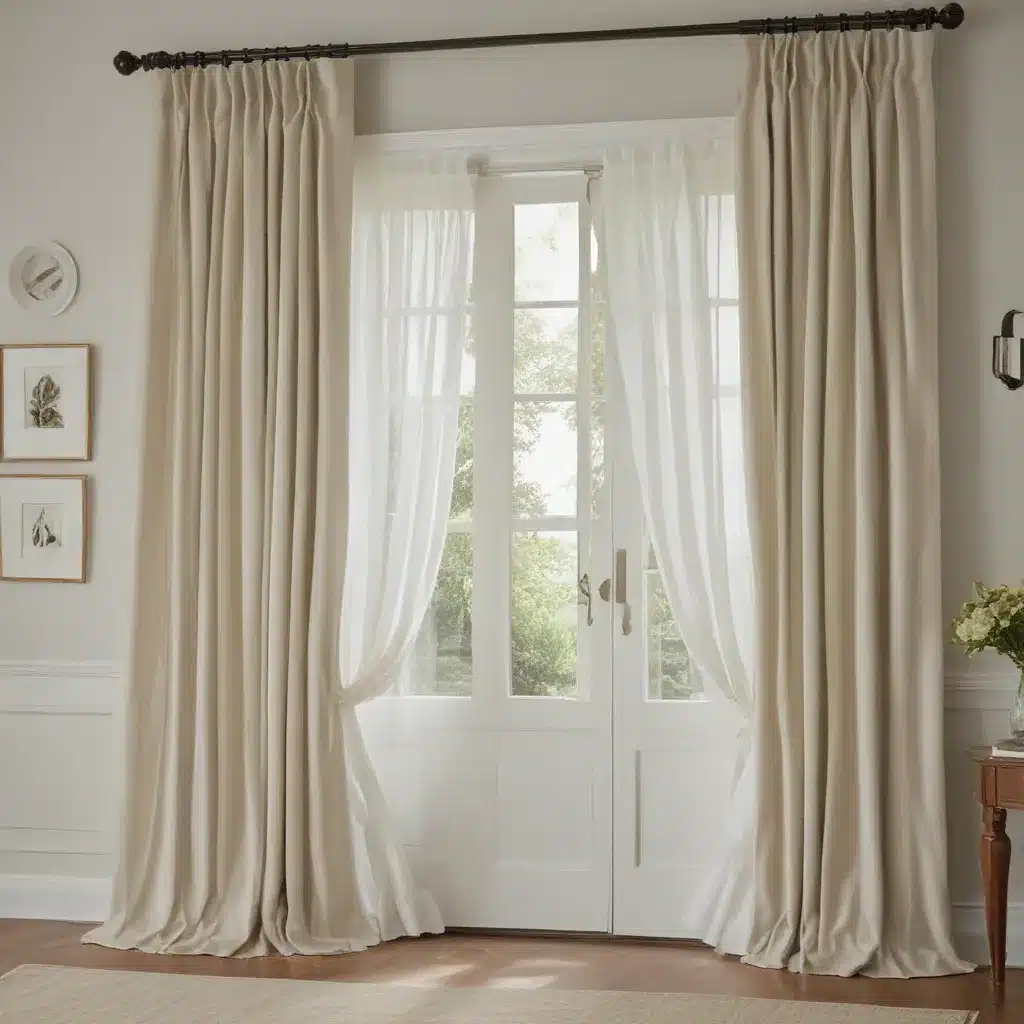Unveiling the Art of Window Dressing
I’ll be the first to admit – when it comes to home decor, I’m no pro. In fact, the last time I tried to hang curtains, I ended up with more fabric than a wedding dress and a rod that looked like it had been through the Bermuda Triangle. But you know what they say, practice makes perfect. And after a few (OK, a lot) of trial and error, I’ve finally cracked the code on how to measure curtains and drapes the right way.
Mastering the Measurements
Let’s start with the basics. The key to getting your curtains and drapes just right is all about the measurements. And trust me, this isn’t one of those “measure twice, cut once” situations – we’re talking precision down to the millimeter here, folks.
First things first, you need to decide where you’re going to be mounting your drapery rod. Are you going for an inside mount, where the rod is installed within the window frame? Or an outside mount, where the rod extends beyond the frame? According to the experts at Blinds.com, outside mounting is the more common choice, as it can make the window appear larger and show off more of the glass when the curtains are open.
Once you’ve got your mounting plan sorted, it’s time to break out the tape measure. For side panels, you’ll want to measure the width of the area you want the panels to cover. Easy peasy. But for full-coverage curtains that are meant to actually close across the window, you’ll need to do a little more math.
Home Depot’s guide suggests adding 12 inches to your window’s width measurement, then dividing that number by the number of panels you want (typically two). That will give you the ideal width for each panel.
The Curtain Calling: Rod to Floor Height
Okay, so we’ve got the width sorted, but what about the length? This is where the real magic happens. To determine your “rod to floor” height, simply measure from where your drapery rod will be mounted all the way down to the floor. Easy, right?
Well, not so fast. Curtain Shop recommends factoring in a few extra inches to account for the curtain’s hem and any potential puddle on the floor. And if you’re going for a more dramatic, floor-sweeping look, you may want to add even more length.
But wait, there’s more! Don’t forget to consider the type of curtain or drape you’re going for. For example, Blinds.com notes that certain styles, like side panels, are meant to be more decorative and don’t need to close all the way across the window. So you can adjust your measurements accordingly.
The Final Flourish: Fabric Fullness
Alright, now we’re really getting into the nitty-gritty. One last thing to consider is the fabric fullness of your curtains or drapes. This refers to the extra material that’s pleated or gathered to create that luxurious, textured look.
According to the experts, most custom-made curtains and drapes are created with a 200 to 300 percent fullness. That means if you order a 24-inch panel, it’ll actually be made with at least 48 inches of fabric, which is then pleated down to achieve that perfect, flowy effect.
Now, if you’re not a fan of too much fabric, you can always opt for a smaller width. But keep in mind that the more fullness you have, the richer and more expensive your curtains will look.
Putting It All Together
Alright, let’s recap:
– Decide on your mounting style (inside or outside)
– Measure the width of the area you want to cover
– Calculate the ideal panel width for full-coverage curtains
– Measure the rod to floor height, factoring in hem and puddle
– Consider the fabric fullness you prefer
And there you have it – the ultimate guide to measuring curtains and drapes like a pro. Now, the only question is, what color scheme are you going for?
Oh, and before I forget – if you’re looking for a top-notch custom window treatments company in the Philadelphia area, be sure to check out Home Curtains Philadelphia. They’ve got all the tools and expertise to help you create the window of your dreams.
Happy decorating, my fellow home decor enthusiasts!



